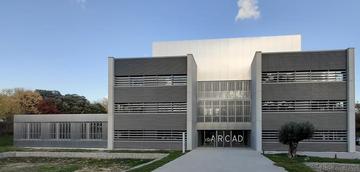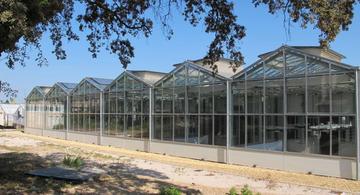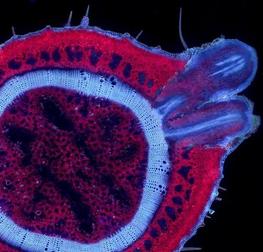Option 1: Arcad, Abiophen and PHIV facilities on Agropolis campus
ARCAD: conserving and managing the genetic diversity of tropical and Mediterranean plants
Arcad building is built around a seed conservation cold room, at the heart of which operates a stacker robot unique in Europe. This cold room is surrounded by three technical platforms (genotyping-sequencing, seed phenotyping, cryoconservation) equipped with the latest technologies to conserve and study genetic diversity.
Studying the diversity of crops and their wild relatives is essential in a context of globalisation and global change. Certain heirloom or wild varieties, which are sometimes endangered, may be less sensitive to climate conditions or to the emerging diseases and plant pests that are spreading throughout the world. They can also be used as parents of new varieties that are better suited to these new contexts.
Moreover, growing a range of different species and varieties is a guarantee of resilience, especially for family farms, which provide more than half of the world’s agricultural production. This contributes to food and nutrition security. Finally, conserving, studying and disseminating this diversity by articulating the different modes of conservation in a complementary manner (in the field with farmers or in centres such as ARCAD) and by recognising the different processes and actors involved in the creation of diversity (farmers, researchers, plant breeders) are key to successful food and agroecological transitions at the global level.
AbioPhen: testing varieties adapted to future climate conditions
CIRAD’s AbioPhen greenhouses, which are walking distance from the ARCAD building, are aimed at furthering research on adaptation to climate change in certain crops, such as sorghum or rice, and subsequently examining in detail underlying mechanisms and identifying associated genetic traits. Environmental conditions can all be controlled (light, temperature, humidity) and CO2 can be increased up to four times the atmospheric level, enabling the greenhouses to simulate future climates: higher temperatures and atmospheric CO2 levels, or drier air. These high-tech greenhouses will be used to study the behaviour of new varieties, resulting from controlled crosses or from new associations of varieties or species, in the climate conditions of the coming decades.
PHIV: histocytology and plant cell imaging platform
PHIV provides access to the latest techniques for visualizing the main molecules in the living world, both in situ and in vivo.
The platform uses high-throughput imaging for plant quantitative genetics and design (anatomical phenotyping, elementary histochemistry). It also uses functional imaging to understand plant biology under stress (use of biosensors), from genes to organs and the whole plant. To characterize sorghum stem anatomical diversity, PHIV platform has developed an image processing work-flow for images analysis of sorghum internodes histological sections.
PHIV works to interface 3D imaging and modelling, to facilitate the integration of knowledge obtained from functional genomics studies into plant development modelling programs, a vital issue for designing the plants of the future.



